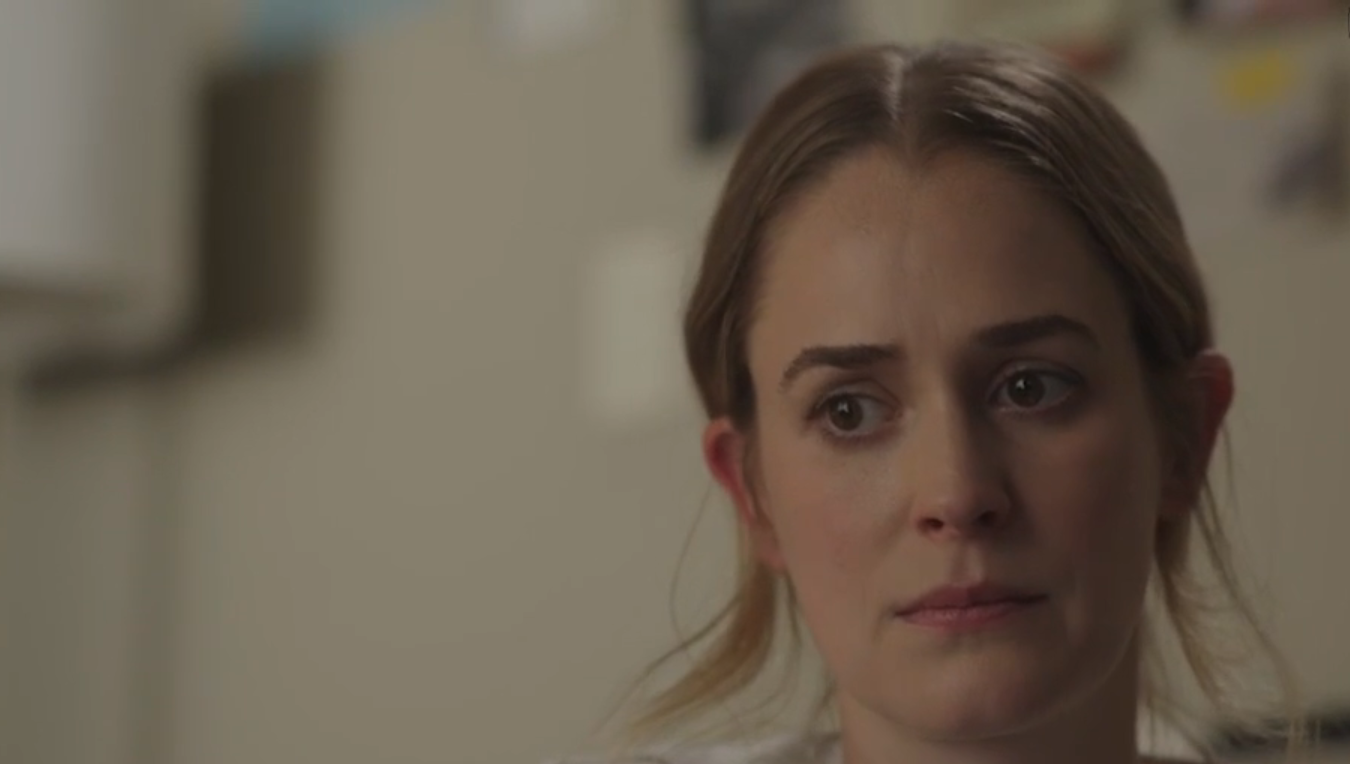Directed by Dylan Pearce, Lifetime’s ‘The Little Girl Who Lived’ is a crime thriller film that revolves around a crime novelist named Alice Kerrigan. Having survived a kidnapper’s wrath in her childhood, she turns to crime novels as a way to get over her trauma. As she enjoys popularity, her life takes a turn when her sister Emma is kidnapped by the same individual, hoping to take revenge on the main character. Her novel ‘Murderer in My Mind’ gets instant approval from her readers. It serves as a stepping stone for the author, while she plans to write another book to tell her own story to the world. The protagonist’s mental state, her past, her present, and her choices are the nucleus of the story. The film delves into the ideas of sisterhood, survival, loyalty, and courage, while also featuring adrenaline-fueled sequences of mystery. SPOILERS AHEAD.
Alice Kerrigan is a Survivor Haunted By a Dangerous Individual
Despite being a fictional character, Alice Kerrigan’s experiences reflect the trauma of the victims of kidnappings in the real world. The writer Peter McLeod conveys the bravery of abduction survivors through the story. While Alice achieves professional success, she still undergoes negative feelings triggered by PTSD. She writes books to help her get over the trauma inflicted on her by the serial kidnapper known only as “The Strigoi.” The challenges she faces in the narrative look at the ways in which victims of kidnapping can experience life after surviving a heinous crime. Though the protagonist is not based on any real-life individual, her ordeal in the film highlights how trauma can resurface in unexpected ways.

One of the cases that comes to mind is that of Elizabeth Smart, who was kidnapped in 2002 and endured almost nine months of abuse. She was saved in 2003 and went on to become an author and advocate for child safety. Alice’s journey in the film is spiritually connected to the experiences of Elizabeth Smart, as both of them were kidnapped as kids and ended up becoming popular authors later. Reportedly, on June 5, 2002, Elizabeth Smart was abducted as a teenager at knifepoint from her bedroom in her parents’ Federal Heights home in Salt Lake City during the night. Elizabeth returned home on March 12, 2003, and subsequently testified against her captors, which resulted in their convictions.
Today, Elizabeth is a prominent advocate in the fight against sexual violence, having established the Elizabeth Smart Foundation in 2011. Though the lives of Smart and Kerrigan may appear to be disconnected, the similarities in the trajectories of their lives connect them on a spiritual level. Just like Alice writes “The Murderer in My Mind” in the film, Elizabeth went on to write ‘My Story’ with Chris Stewart serving as co-writer. In conclusion, it can be said that Alice Kerrigan’s journey, despite being fictional, narrates the reality of the ways in which victims of kidnapping can never truly forget the past.
The Murderer in My Mind Studies The Minds of Serial Kidnappers
“The Murderer in My Mind” is a book written by the protagonist Alice Kerrigan, which highlights the mental health aspects of victims of kidnappings. Her main purpose behind writing the book is also to study the mindsets of kidnappers who look to abduct little kids. Despite being a fictional book that exists in the film, it points to the ways in which survivors, at times, write books or journals to cope with their tragedy. The book is also meant to help other victims, who can probably read it to overcome their thoughts of guilt or shame after being kidnapped. Serial abductors and killers pose a danger to people of all ages, but kids are specifically vulnerable, and the book presumably helps parents to educate kids about kidnappings so that they are mentally capable of perceiving how trauma works.

Though the title of the book suggests murder, the main intention behind it is to spread awareness about the dangers of ignorance of mental health. One of the real-life examples here is the case of Jaycee Dugard, who was kidnapped and held captive for eighteen years. On June 10, 1991, eleven-year-old Jaycee Lee Dugard was abducted from a street in Meyers, California, while walking to her school bus stop. Jaycee Dugard, abducted and held captive for years, was finally rescued on August 26, 2009, at the age of 29. Her discovery was prompted by the suspicious actions of her captor, which led to an investigation by police and parole officers.
In July 2011, she released her first memoir, ‘A Stolen Life’, in which she recounted her ordeal, her abduction, her time in captivity, and her journey towards eventual recovery. There are similarities between ‘A Stolen Life’ and “The Murderer in My Mind” as they both come from the perspectives of survivors. The book becomes a way for Alice to express her perspectives on kidnapping, while also creating social awareness. Ultimately, it can be said that Alice’s journey and her book are fictional elements that reflect reality poignantly.
Read More: Is The Little Girl Who Lived a True Story?


